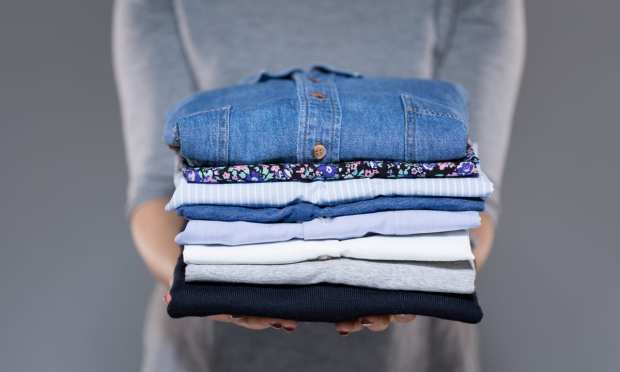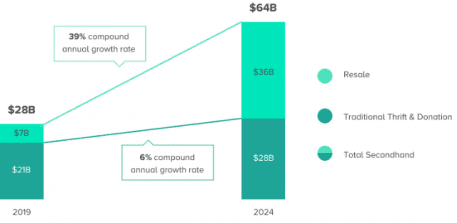ThredUP Cashes In On reCommerce Trend As Young Shoppers Rethink New Clothes

California-based secondhand clothing platform thredUP is set to start trading Friday (March 26) after pricing its initial public offering (IPO) at the top end of the expected range amid strong demand from investors.
The pricing of $14 per share gives the Oakland startup an initial market value of over $1 billion and marks a 12-year journey that took it from an idea to a publicly traded company with over 1.2 million active users who buy and sell clothes on the site.
According to company filings, thredUP did about $190 million in total revenue last year, three-quarters of which came from consignment fees, marking a 14 percent year on year increase.
“To expand our buyer base, we must appeal to and attract buyers who do not typically purchase second hand items, who have historically purchased only new retail items or who used other means to purchase second hand items, such as traditional brick-and-mortar thrift stores or the websites of other secondary marketplaces,” the company listing documents said.
Although younger millennial and Generation Z shoppers and more sustainability-minded consumers have shown to be big advocates of the so-called reCommerce concept, thredUP is not alone in chasing this trend and will face formidable competitors like The RealReal, Poshmark and Swap.com.
Room For Everyone
According to thredUP’s most recent Fashion Resale Market Trend Report, the secondhand clothing industry, consisting of resale and traditional thrift shops, is set to hit $64 billion by 2024, more than double where it was in 2019.
 But importantly, most of that growth is set to come from the resale side of the business, which is pegged to see its share go from 25 percent of sales in 2019 to 56 percent of projected sales in 2024 as it overtakes traditional brick-and-mortar secondhand retail stores.
But importantly, most of that growth is set to come from the resale side of the business, which is pegged to see its share go from 25 percent of sales in 2019 to 56 percent of projected sales in 2024 as it overtakes traditional brick-and-mortar secondhand retail stores.
In addition, the company’s research shows that the online portion of the secondhand market has also delivered better than industry growth, especially from homebound consumers shopping from home or cleaning out their closets during the pandemic.
“With consumers seeking bargains from home, online secondhand is set to grow 69 percent between 2019 and 2021, while the broader retail sector is projected to shrink 15 percent,” thredUP’s report said.
At year end, thredUP’s average order size was four items and $69, with an average of $42 in revenue generated for the company with a 69 percent profit margin.
On A Mission
There’s also the environmental component of the business, with thredUP referring to itself as a “one-stop thrifting destination committed to saving the planet from fashion waste” and even offering browsers a way to calculate the carbon footprint of their closet, pointing out that “the fashion industry produces more harmful carbon emissions than the aviation and shipping industries combined.”
Currently, thredUP says it is able to “recirculate clothing at an extraordinary speed and scale,” noting its ability to process 100,000 unique items per day, to list up 2.4 million items on its site and to store over 5.5 million items in its distribution centers.
There’s also the business-to-business angle of thredUP’s Resale as a Service offering, in which it provides fully customizable turn-key solutions to retailers, designers or manufacturers who want to find a new way to connect with loyal customers, while also developing ties with new ones.
To be sure, the secondhand clothing resale business is not without its risks, including greater than expected returns, shipping costs and liability for failing to identify counterfeit or stolen merchandise.
But with the company continuing to innovate, as in its secondhand sales presence on Walmart.com, and the tailwind of changing consumer taste, the next 10 years for thredUP could prove to be its best.
